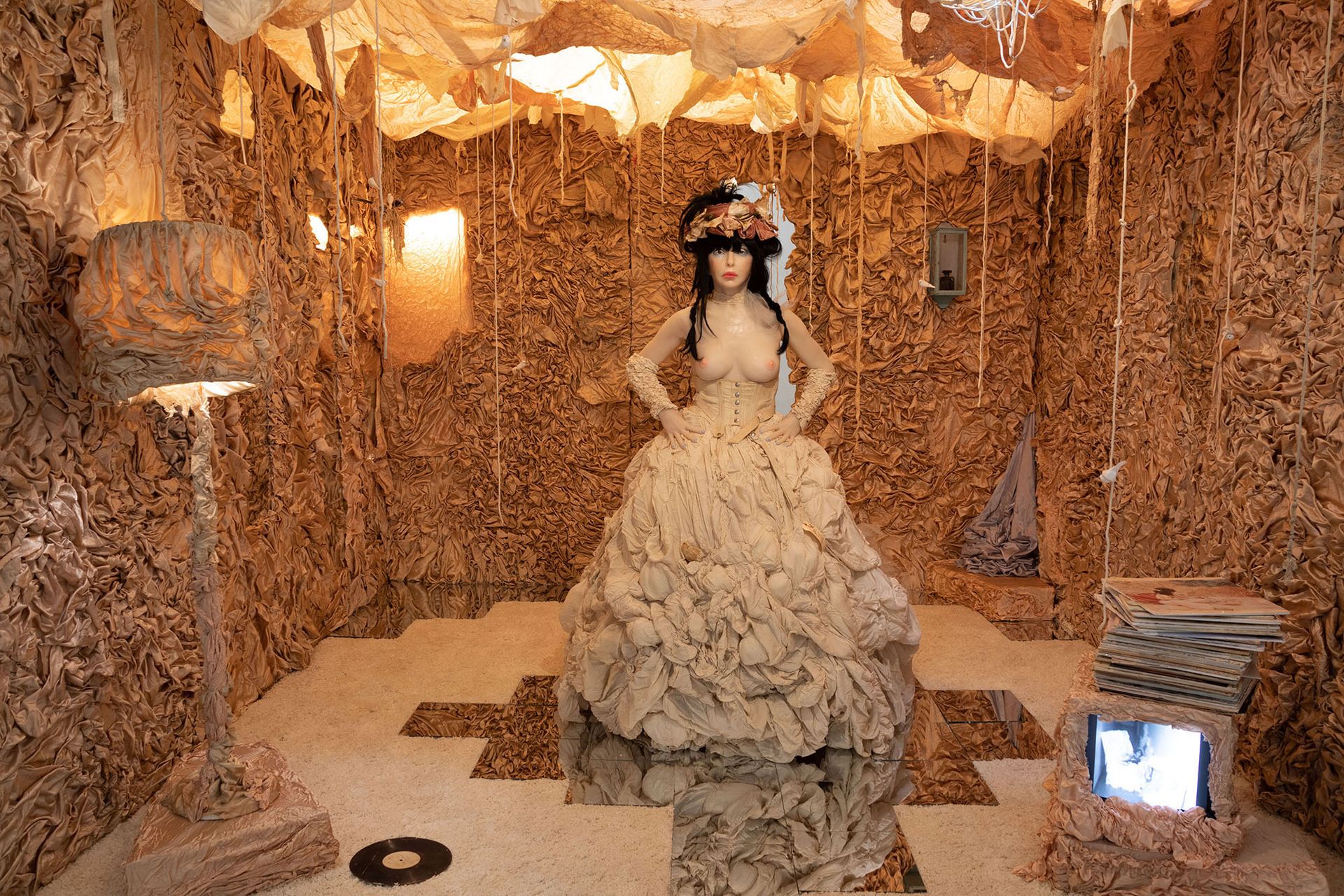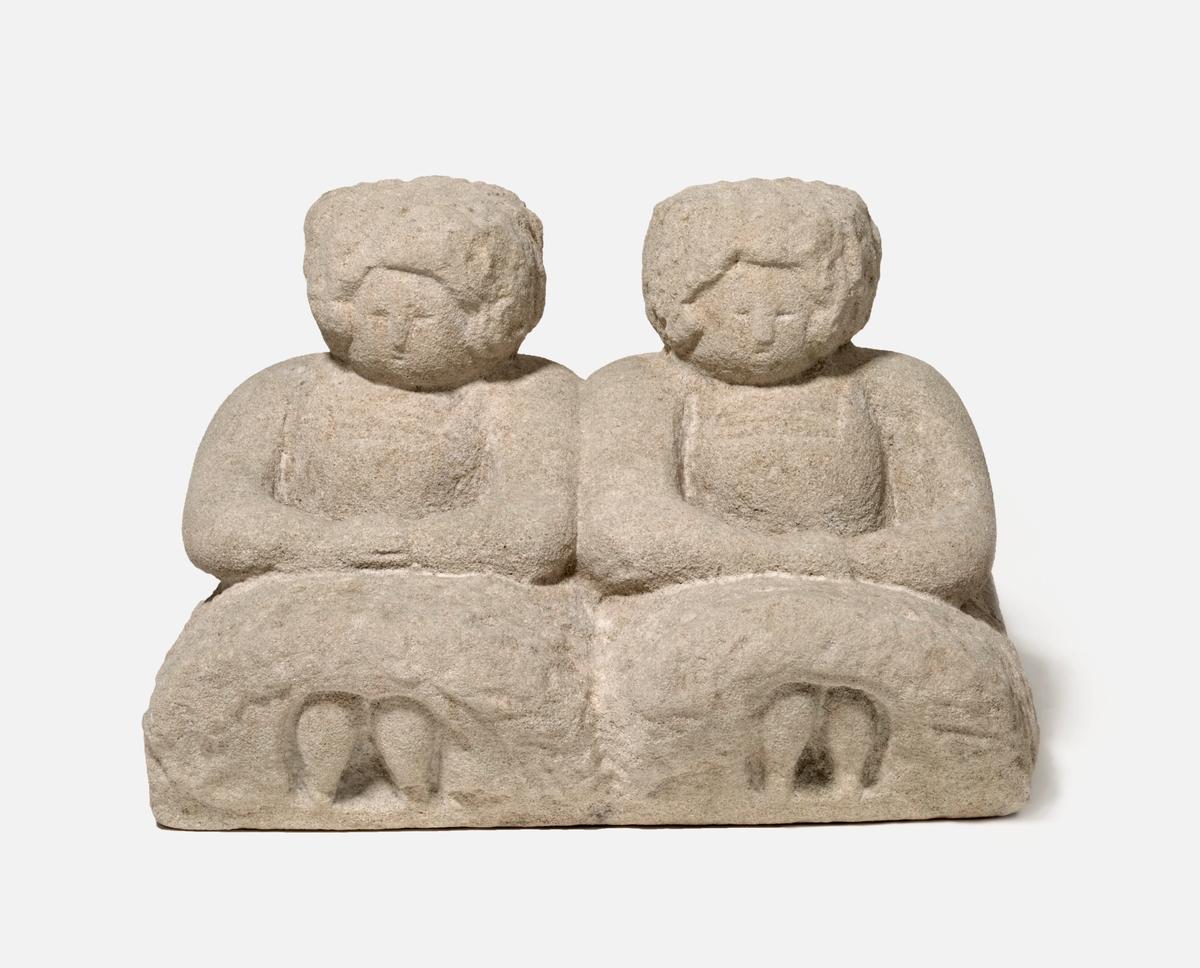Multitudes
Until 5 September at the American Folk Art Museum, 2 Lincoln Square, Manhattan
As part of its 60th anniversary celebrations, the American Folk Art Museum has assembled a collection exhibition comprised of more than 400 works spanning four centuries, exploring the “multitudes” of the museum’s collection, which has helped expand common perceptions of what can be considered fine art. The centerpiece of the exhibition is a recently rediscovered limestone sculpture by the self-taught artist William Edmondson—the first Black artist to have a solo show at the Museum of Modern Art, in 1937—that was recently spotted in St. Louis and eventually bought by the artist known as Kaws, a museum board member. The work Martha and Mary (around 1931-37) presents a religious theme ubiquitous in Edmondson’s practice and is considered a masterpiece among the 300 sculptures the artist made in his lifetime. The exhibition also includes rarely-seen works by women artists who captured the visual zeitgeist of their times, such as intricate needlework pictures and samplers from the 1700s and 1800s by Hannah Carter and others that served as manifestations of their daily experiences.

Colette Lumiere, Notes on Baroque Living (Installation) (1978–83), with new Living Colette sculpture, in collaboration with Cajsa von Zeipel, 2021. Courtesy of the artist and Company Gallery, New York
Colette Lumiere: Notes on Baroque Living: Colette and Her Living Environment, 1972–1983
Until 12 February at Company Gallery, 145 Elizabeth Street, Manhattan
In the early 1970s, the mononymous New York artist Colette started creating unconventional art installations in even less conventional locales. Sure, she showed on the streets and in the clubs of Lower Manhattan like many of her contemporaries, but she also staged durational public performances in environments she created in storefront windows and, most famously, turned her own apartment into a total environment that she inhabited as a kind of living sculpture. A fragment of that environment, Notes on Baroque Living (Installation) (1978-83, reconstructed 2021)—its floors, walls, ceilings and seemingly every piece of furniture covered in rippling and undulating layers of fabric and dotted with mirrors and photographic lightboxes—is the centerpiece of this show. It drives home just how of-the-moment Colette’s work was then, fusing strands from punk and performance art with a maximalist aesthetic that rejected the cold austerity of Minimalism. And, through the ample additional material on view—chronicling, among other projects, the artist’s staged death at the Whitney Museum in 1978, after which she re-emerged as Justine, manager of the Colette estate and leader of, what else, a punk band—this exhibition makes a convincing case for Colette Lumiere’s importance as a key figure in the last half-century of contemporary art, one whose influence can be sensed in projects by everyone from Jeff Koons and Cindy Sherman to Marina Abramović.

Alec Soth, Camera Club. Washington, Pennsylvania. (2019) Courtesy: Sean Kelly, New York
In this picture, taken at one of the oldest camera clubs in the US, amateur photographers look at prints of each others work on an old lightbox.
Alec Soth: A Pound of Pictures
Until 26 February at Sean Kelly, 475 Tenth Avenue, Manhattan
“It’s a project born out of the ashes of a failed project. Originally, I wanted to make something important, something ‘relevant to the times’,” says the photographer Alec Soth about his new book and exhibition, “but trying to force something that isn’t what you authentically want to do, it doesn’t work.” As a response to America’s unhinged Trump years, Soth planned to follow the path of Abraham Lincoln’s funeral procession and, in his style, photograph life along the way. But what began as an attempt to make an outward statement on the present became an inward study of the photographer’s past and his love of the medium, a search for purity, a rebuilding of the muscles that make Alec Soth work. It is a show about making pictures that, while it has no overarching theme, allows the viewer to build their own associations from and relationships with the work on the wall. Some of the most powerful images are, fittingly, of other pictures—along his travels Soth often stops to buy photographs in bulk (often by the pound) from storage sheds and collectors across the US. It is a show that encourages the simple, and often beautiful act of observing.


